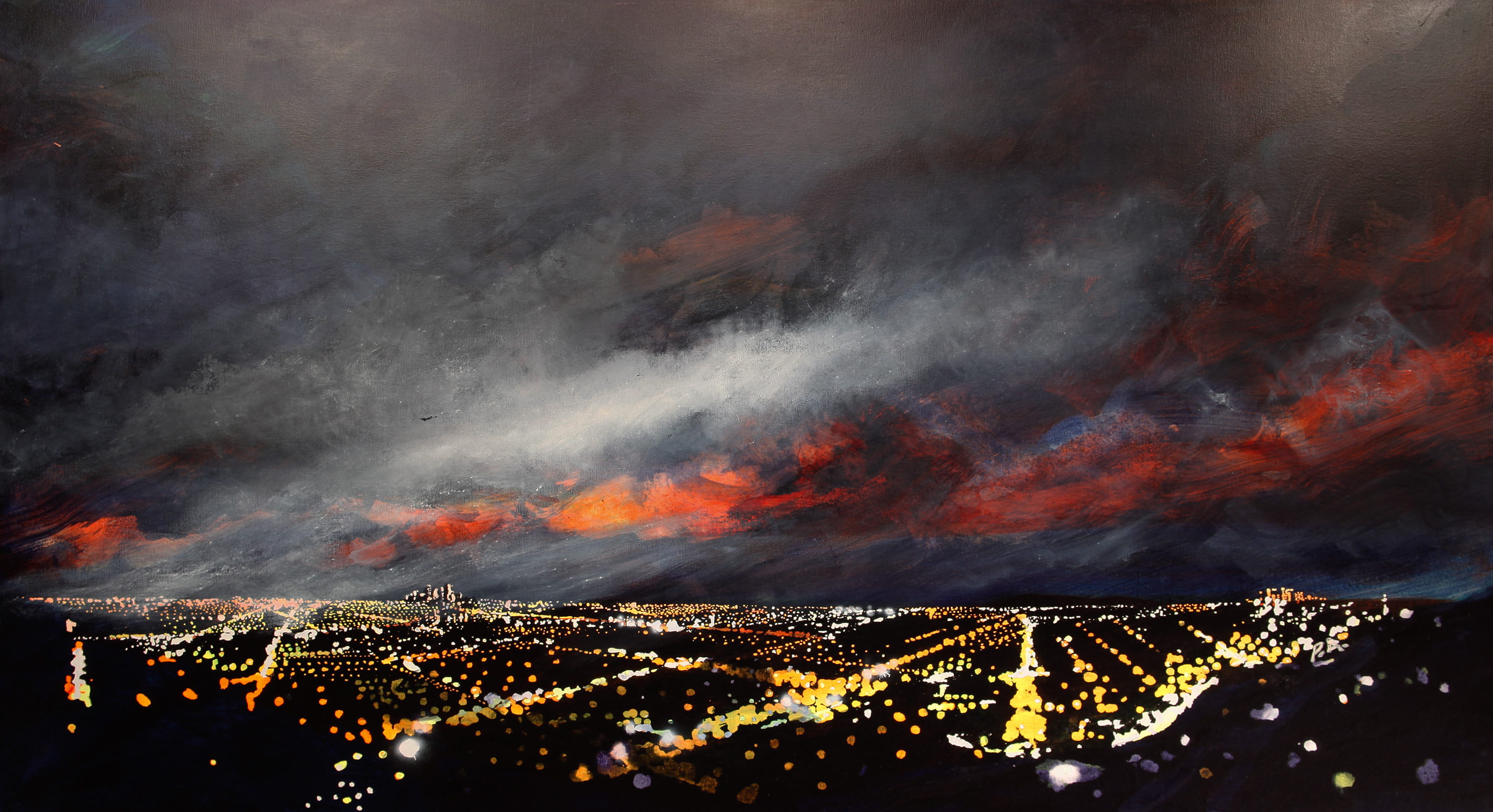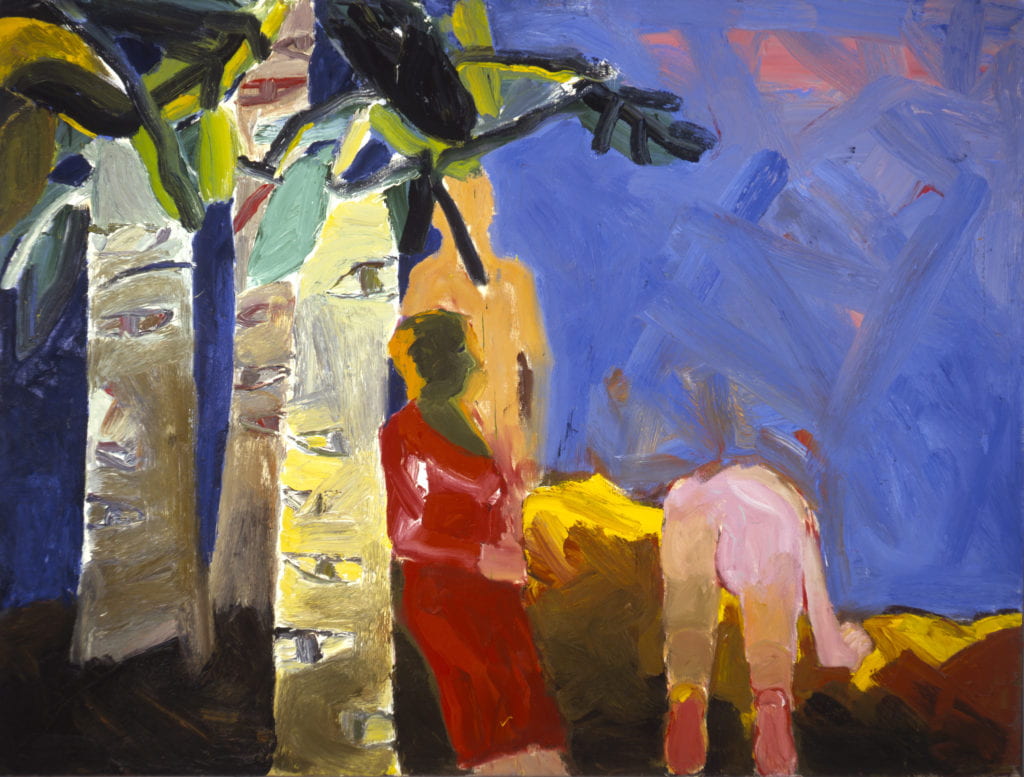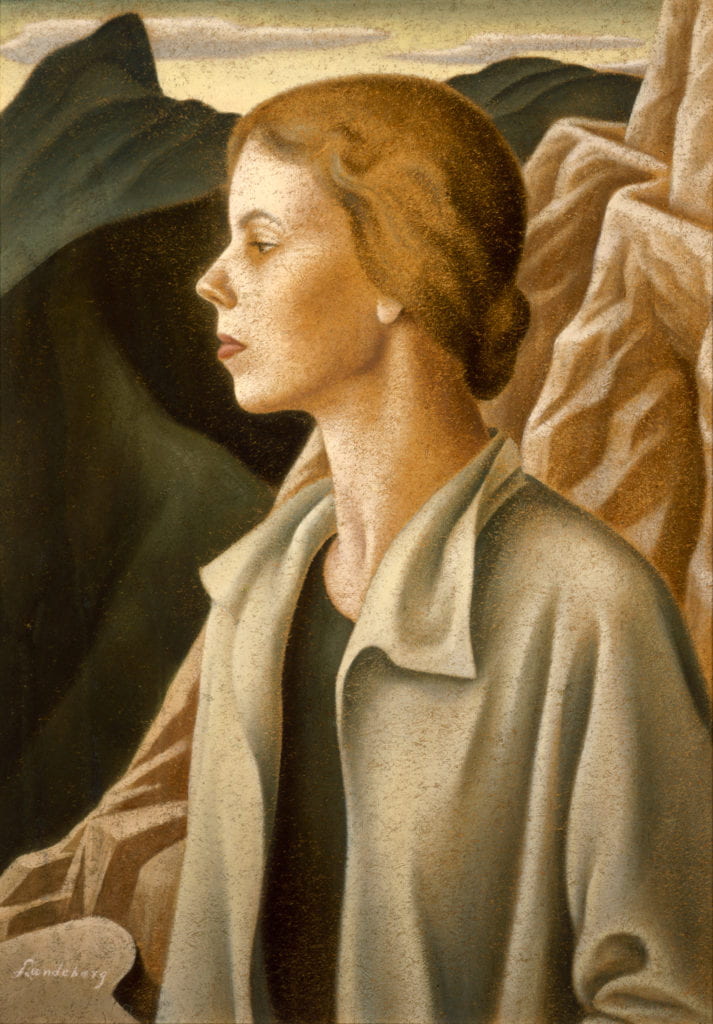Exquisite, long-hidden Buck art collection comes to UCI

An exquisite but long hidden collection of California art was given to UCI by the trust of Gerald Buck, a Newport Beach developer and art aficionado who passed away in 2013.
Consisting of over 3,200 original works of art, the Buck Collection provides a uniquely comprehensive vision of art styles across many media. The Collection includes works by Richard Diebenkorn, Peter Alexander, Sam Frances, Ruth Asawa, Bruce Conner, Roger Kuntz, Nathan Oliviera, David Park, William Ritschel, Wayne Thiebaud, Paul Wonner, Helen Lundeberg, and many others.

Carlos Almaraz (“Car Crash (Wipe-Out on Pacific Coast Highway)”)
In the 1970s, Mexican-born Carlos Almaraz catalyzed Los Angeles’ Chicano street art movement, infusing cultural activism into his seemingly subdued paintings of Southern California landscapes marred by fires, car crashes and other disasters. Almaraz grew up in Chicago and East Los Angeles and became involved in social justice issues such as Cesar Chavez’s labor advocacy. The themes in his art also permeate his writing; he produced dozens of volumes of poetry and philosophy. Almaraz, whose paintings are installed in galleries worldwide, died in 1989 at age 48.
Credit: The Buck Collection at The UCI Museum and Institute for California Art

Roger Kuntz (“Santa Ana Arrows”)
Fascinated by freeways, blimps and bathtubs, painter Roger Kuntz was best known for his dramatic portrayals of Southern California highways and road signs, rendered with stark light and shadow. Born in Texas in 1926, he grew up in Lomaland, a Theosophical Society community in San Diego’s Point Loma neighborhood. Kuntz studied art at Pomona College and Claremont Graduate University, served as a B-24 turret gunner during World War II and taught at Scripps College before moving to Laguna Beach in 1963. In 1975, three years after being diagnosed with skin cancer, he took his own life.
Credit: The Buck Collection at The UCI Museum and Institute for California Art

Charles Arnoldi (“Bob: 1991 film ‘Backtrack’”)
A Southern California transplant originally from Dayton, Ohio, Charles Arnoldi imbues his signature wood sculptures with abstract expressionism, creating vibrant, three-dimensional hybrids of painting and woodwork. Born in 1946, he moved to Ventura in the late 1960s, attending a series of art schools before pursuing an independent career. Arnoldi’s art – most of which he calls “stick paintings,” characterized by twigs and branches affixed to colored wood and canvas – became a fixture in California museums throughout the late 20th century, appearing in the Berkeley Art Museum, the Orange County Museum of Art and LACMA.
Credit: The Buck Collection at The UCI Museum and Institute for California Art

Maurice Braun (“Springtime”)
Born in Hungary in 1877, Maurice Braun moved to the United States as a young boy and there began an illustrious career as an impressionist painter. After moving from New York to Southern California in 1909, he began painting natural landscapes of the area in the style of his mentor, American impressionist William Merritt Chase. Braun died in San Diego in 1941, but his work remains on view at LACMA and other institutions throughout the Southwest.
Credit: The Buck Collection at The UCI Museum and Institute for California Art

Joan Brown (“People and Eye Trees in the Park in Madrid”)
One of the progenitors of San Francisco’s beat art movement, Joan Brown produced figurative paintings that cross the boundaries between mundane and abstract while centering on the vibrant colors, cultures and images of coastal California. A Bay Area native, she began painting in her early 20s, drawing inspiration from her personal relationships, ancient culture, and such artists as Goya and Rembrandt. Later in life, Brown became interested in Eastern spirituality and made frequent trips to India, where she died in 1990.
Credit: The Buck Collection at The UCI Museum and Institute for California Art

Peter Alexander (“Thrasher”)
Although most famous for his involvement in Southern California’s light and space sculptural movement of the 1960s, Peter Alexander is also fascinated with California’s urban landscapes and has incorporated them into many of his paintings. He was born in Los Angeles in 1939, and the city has remained a muse throughout his artistic career. His best-known paintings depict aerial views of Southern California by night, and his work has been commissioned by area landmarks such as the Walt Disney Concert Hall and Santa Monica Municipal Airport. In addition to being exhibited nationwide, Alexander’s paintings and sculptures have appeared in renowned Southern California institutions including the Getty Museum and the Los Angeles County Museum of Art.
Credit: The Buck Collection at The UCI Museum and Institute for California Art

Stephen De Staebler (Woman With Missing Hip)
After moving from Missouri to the Bay Area in the late 1950s, Stephen De Staebler began studying ceramics at UC Berkeley, where he realized its potential as fine art. Under the influence of mentor Peter Voulkos, De Staebler became instrumental in the midcentury California clay movement, using clay and bronze to sculpt minimalist human forms in the figurative tradition. His works have been exhibited in galleries across Northern California and elsewhere. He died of cancer in 2011.
Credit: The Buck Collection at The UCI Museum and Institute for California Art

Richard Diebenkorn (“Albuquerque”)
A native of New Mexico, Richard Diebenkorn was described by art critic Michael Kimmelman as “one of the premier American painters of the postwar era, whose deeply lyrical abstractions evoked the shimmering light and wide-open spaces of California.” In his early work, Diebenkorn explored abstract expressionism – reflected in “Albuquerque.” He ultimately expanded into other styles, such as figuration. Living most of his life in California, Diebenkorn served on the UCLA faculty starting in the late 1960s, when he began producing his most famous works: his Ocean Park series of 145 paintings over 20 years. He died in 1993 at age 71.
Credit: The Buck Collection at The UCI Museum and Institute for California Art

Lorser Feitelson (“Magical Space Forms”)
Best known for his minimalist geometric paintings, Lorser Feitelson helped establish modernist art in Los Angeles. Raised in New York and educated in Paris, he was impressed by the growing abstraction movement and resolved to develop his own distinct version of it. After moving to the West Coast in 1927, Feitelson became a founder of the hard-edge style of painting, which features blocks of color and geometric shapes. He died in 1978, and today his work is found in permanent collections from LACMA to the Smithsonian Institution.
Credit: The Buck Collection at The UCI Museum and Institute for California Art

Sam Francis (“Augustus After Sonny, Sonny Before Augustus”)
A University of California-educated painter and World War II veteran, Sam Francis shaped postwar abstract expressionism alongside such artists as Jackson Pollock and Clyfford Still. Born in San Mateo, California, in 1923, he joined the U.S. Army Air Forces and began painting at age 21 after a combat injury left him hospitalized. Once recovered, Francis earned degrees at UC Berkeley and moved to Tokyo and Paris, where he held his first exhibition. Japanese and French influences are apparent in his style, which uses white space to highlight vibrant colors. Francis died in 1994, but his works remain fixtures in galleries worldwide; one of his paintings even hung in the White House under former President Barack Obama.
Credit: The Buck Collection at The UCI Museum and Institute for California Art

Helen Lundeberg (“Self-Portrait”)
While growing up in Pasadena, Helen Lundeberg took an art class taught by Lorser Feitelson (whom she later married) at the Stickney Memorial School of Art, which led her to become one of the more acclaimed post-surrealist painters of her time. In Lundeberg’s work, carefully planned subjects are used to guide the viewer through the painting, gradually revealing a deeper meaning – and exposing the imaginative world of her mind. Post-surrealist themes infused Lundeberg’s paintings until the 1950s, when she began to explore geometric abstraction. She died in 1999 at age 91.
Credit: The Buck Collection at The UCI Museum and Institute for California Art

Ben Messick (“Children’s Playground”)
A student and longtime instructor at the renowned Chouinard School of Art in Los Angeles, Ben Messick is as well-known for his regionalist paintings as he is for influencing a generation of Los Angeles modernists. His career began in the late 1920s and continued up to his death in 1981. Messick’s oeuvre can be divided into two distinct periods: regionalist paintings from the 1930s and ’40s and modernist pieces from the 1950s onward. His work is featured in many Southern California museums and private collections.
Credit: The Buck Collection at The UCI Museum and Institute for California Art